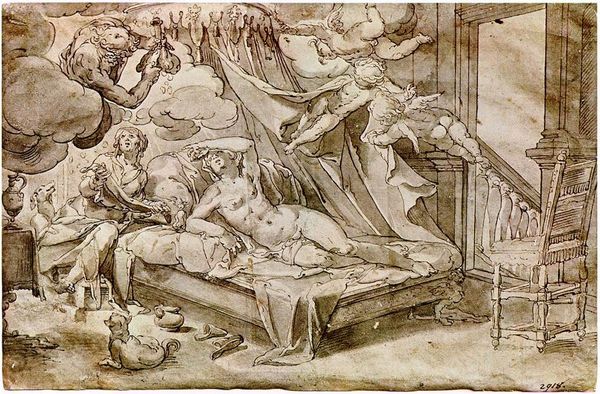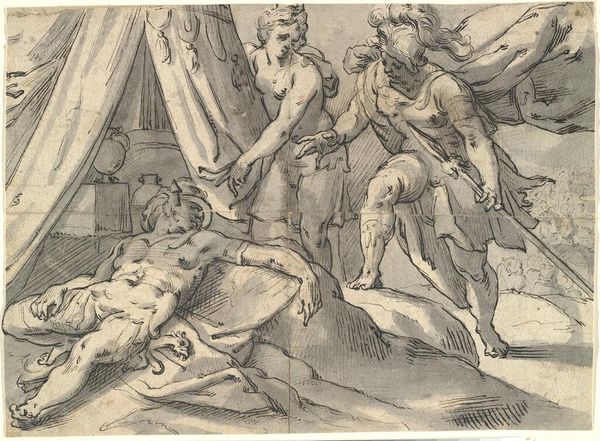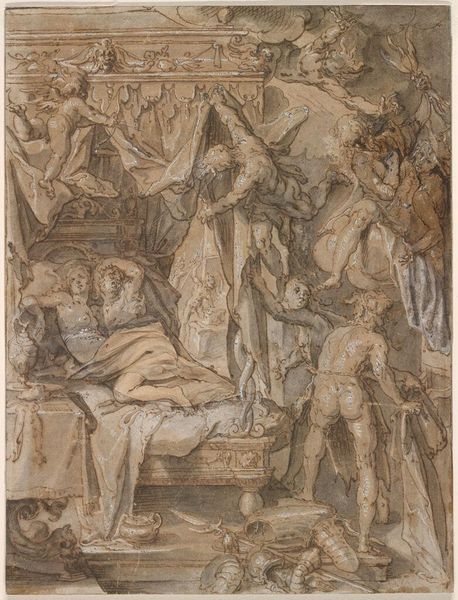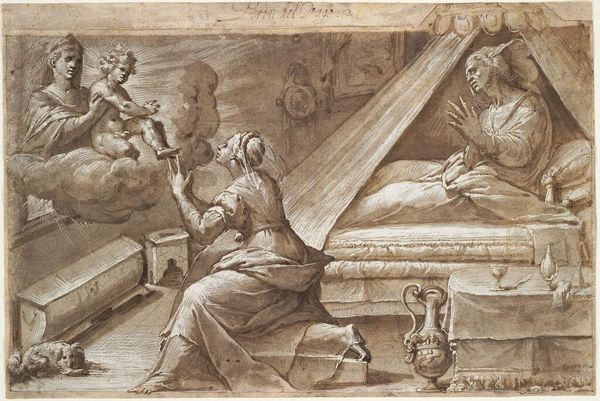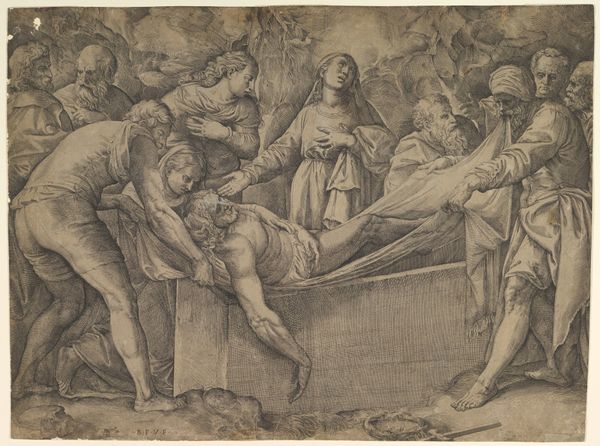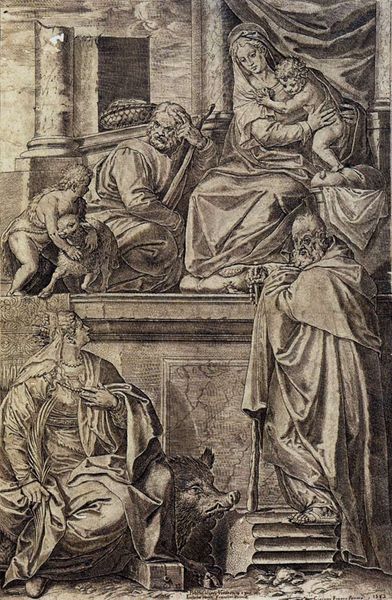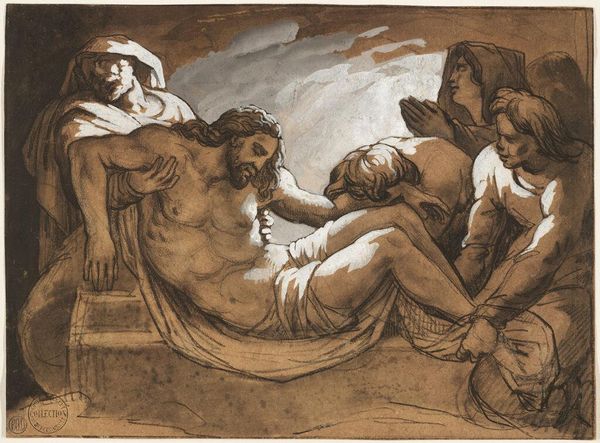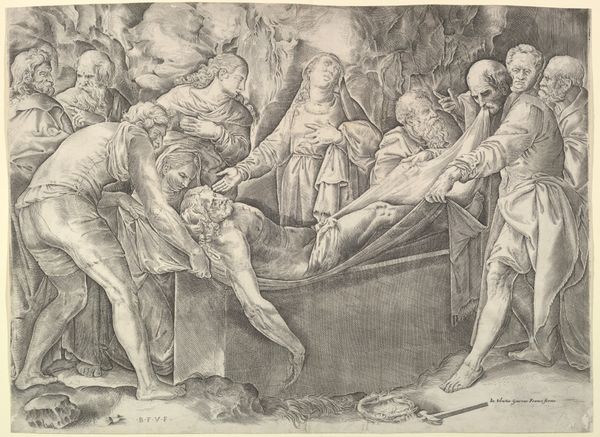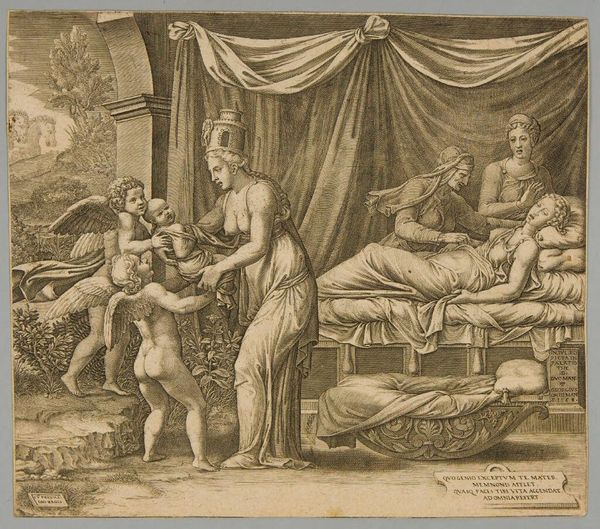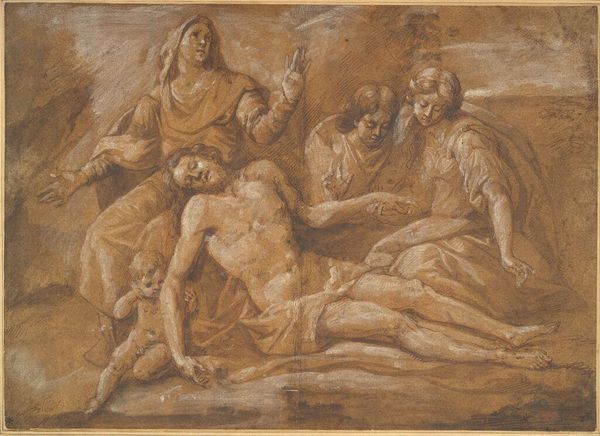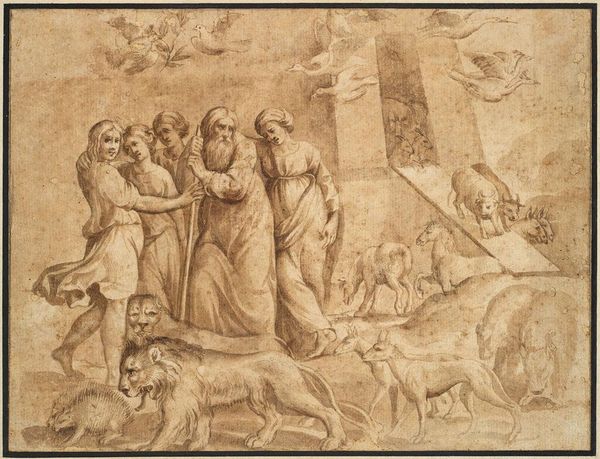
drawing, carving
#
portrait
#
drawing
#
carving
#
sculpture
#
charcoal drawing
#
figuration
#
form
#
oil painting
#
roman-mythology
#
geometric
#
ancient-mediterranean
#
mythology
#
history-painting
#
italian-renaissance
#
nude
Copyright: Public domain
Curator: The textures in Andrea Mantegna’s "Mythological Scene, Metamorphoses of Amymone," created around 1500, really capture my attention. It has such a stark presence. What is your first impression, Editor? Editor: Honestly, I find it a little unsettling. It has this dreamlike yet harsh quality—the way everything is so sharply defined gives it a strange, almost unsettling feel. The figures are so still and frozen. What about the material aspects strikes you? Curator: Knowing this is a drawing meant to mimic carving tells me Mantegna was clearly thinking about the value associated with particular techniques. This subverts expectations, almost playfully—suggesting he might have been consciously undermining art hierarchies of the period. Editor: I can appreciate the craftsmanship, but all I see is an uncanny valley. The artist’s trying to depict beauty, yet the sharp lines, the forced stillness... it leaves me a little cold. Perhaps he wasn't intending to evoke a sentimental emotional response, maybe something more intellectual. It definitely makes you think about artifice. Curator: Precisely. Mantegna also played around with the viewer's own expectations regarding classical mythology. The female figure being surrounded by these figures suggests her vulnerability within patriarchal narratives, all part of the stories that were designed and consumed back then. Editor: Absolutely, and considering this era was transitioning from religious dogma toward humanism makes me consider Mantegna himself and wonder what position he inhabited on that axis. But more than any symbolic depth, I am fixated on the way he coaxed the image out from essentially bare nothingness using such elemental materials: charcoal or perhaps chalk. This reminds us art need not be ostentatious in its production, its consumption, or its emotional import to affect our understanding. Curator: Exactly. Mantegna used available, familiar materials to present and represent myth and its potential for critiquing a specific socio-cultural condition. Thanks for fleshing this out. Editor: Indeed. A bit dark, but ultimately memorable!
Comments
No comments
Be the first to comment and join the conversation on the ultimate creative platform.
